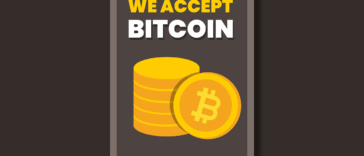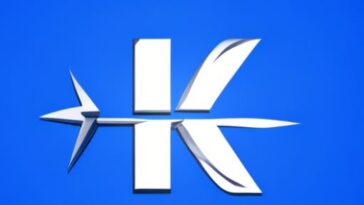
Tezos, an open-source platform for blockchains that supports smart contracts and distributed applications (DApps), is a decentralized application development environment. The on-chain governance system is what makes Tezos unique. It allows protocol changes to be made through an official process, where all stakeholders are able to vote for protocol updates. Tezos can implement new features without having to resort to hard forks that could split communities and lead to parallel blockchains.
The symbol for the native digital coin is XTZ. Tezos uses a Proof-of Stake (PoS), rather than the proof-of work (PoW) system used by many other cryptocurrencies. The PoS system reduces energy usage associated with the maintenance of the network and allows token holders the opportunity to take part in the verification of blocks and transactions, also known as baking.
Tezos is a platform that aims to provide a secure and robust environment for the creation of various decentralized applications, ranging from non-fungible (NFT) tokens to financial services. The innovative way it approaches protocol improvements and stakeholder management, combined with its potential to reduce energy consumption through PoS, positions Tezos as an innovator in the blockchain industry.
Contents
Tezos Overview
Tezos, a blockchain-based network, revolutionizes traditional governance models by using a self amending ledger as well as Proof of Stake for consensus.
Learn the basics of Blockchain
Tezos’ blockchain is a distributed ledger which records all transactions on multiple computers. The data does not reside in one central place and can’t be censored or controlled by any single entity. It is based on the PoS consensus system and allows bakers to protect the network using their XTZ tokens.
- Proof of Stake: Consensus mechanism
- Native Cryptocurrency – XTZ (commonly known as “tezzies”)
- Notable Feature: Decentralization
Tezos Protocol Characteristics
Tezos is unique in its ability to upgrade and maintain the on-chain governance without a hard fork. The formal development process, where all stakeholders are involved in decision-making and the design of Tezos protocol makes this flexibility possible.
- Governance: On-chain, stakeholder-based
- Upgradeability: seamless protocol upgrades without hard forks
- Smart Contracts: Integrated smart contract and formal verification
The validation team, also known as bakers, is a vital part of the Tezos platform. Participation in protocol updates facilitates continual improvement and adaption. Tezos uses formal verification to verify smart contracts, aiming to provide a high degree of security and reliability. This is important for both developers and users.
Architectural Technology
Tezos is a blockchain platform that uses a decentralized, modular consensus system and allows for self-amendment. Its structural uniqueness is critical for its long-term stability and functionality.
The Network Structure
Tezos is a peer-to-peer network (P2P), which relies on different types of nodes to ensure network security and consensus. The layered system allows for flexibility and robustness.
- The endorsers are in charge of reinforcing consensus through the endorsements of blocks that have been created by the bakers.
- The role of the baker is crucial, as it involves the creation of blocks and validation of transactions.
- The bakers are able to be reported for any misconduct, which adds an extra layer of protection.
Smart Contract Features
- Tezos smart contracts benefit from formal validation, which makes them a good choice for financial or contractual applications that require high levels of security.
- Michelson is a smart contracting language that allows developers to create and publish verifiable codes on the blockchain.
- It is easier to create contracts that are mathematically verified and reliable, and minimizes bugs and vulnerability risks.
On-chain governance
Tezos has incorporated a way for all stakeholders to participate directly in the governance process of the protocol. This method is known as “on-chain governance”.
- Change Proposals: Participants can submit protocol improvements that will be voted on by the community.
- Upgrade Mechanism: The network is automatically updated with successful proposals, which avoids hard forks. This ensures a constantly evolving platform.
XTZ Token Economics
Tezos, a decentralized application platform and smart contract system is known not only for its innovative approach to blockchain governance reflected by its token economy. The XTZ, also known as a tez, tezzie or tez, is the engine that powers this self-modifying blockchain. It has a significant impact on how votes are cast and proposals implemented.
Token Allocation
Tezos was founded in 2017 and the token allocation for its genesis was decided by an online fundraiser that resulted from a large amount of community involvement. The allocation of tokens is broken down into several categories.
- Participants in the Tezos fundraising: The initial XTZ stock was given to the fundraiser participants.
- Tezos Foundation : The Foundation received a percentage of all proceeds to help support its development.
- As part of this distribution, tokens were set aside as well for developers and early supporters.
Tezos is different from other blockchains in that it does not have an absolute limit on how many XTZ Tokens can be created. The baking process creates new tokens as a reward for participating in the network.
Bake and Stake
Tezos offers a consensus mechanism unique to the cryptocurrency called Baking, which allows stakeholders to participate in both block creation and verification. How it works is as follows:
- Baking: XTZ token holders have the option to bake themselves or to delegate to a professional, helping to improve network security.
- Bakers are awarded XTZ for their participation as block rewards. These XTZ come from the inflation of token supply.
Baking is a key part of token economy, as it secures the network while also providing a way to distribute tokens to participants. Inflationary models encourage holders to interact with the network, rather than just speculate about the Token’s where to buy.
Tezos Community & Ecosystem
Tezos’ robust ecosystem is based on participation, governance and a global community. The developer communities and support structures are a testament to this engagement.
Developer Support
Tezos’ ecosystem stands out for its extensive developer portals as well as events such hackathons that provide guidance and resources to builders at all levels of experience. The Tezos x EasyA hacker house, for example, offers 36-hour intensive sessions on coding the Tezos Blockchain, accessible to all developers, regardless of their technical background, including marketing and coding.
User Communities
The Tezos platform fosters active communities of users, ranging from researchers and validators to innovators and builders. The platform is a living organism and these groups play a vital role in its evolution. They are supported by scalable and energy efficient protocols. These groups not only play an important role in the development of Tezos, but they also have a crucial part to play in the governance.
Comparison Analysis
This section compares Tezos with other blockchain platforms, highlighting commonalities and distinct features which set Tezos aside in the landscape of competing blockchain platforms.
Other Blockchains and Blockchains Similar
Other blockchain systems share many of the same characteristics as Tezos. The following are some of the characteristics that Tezos shares with other blockchain systems.
- Tezos is decentralized, like many other blockchains. This means that there are no central points of failure or control.
- Tezos supports smart contracts similar to Ethereum or other decentralized platforms.
Distinctive Elements
Tezos is distinguished by a few important elements.
- Tezos provides a mechanism to allow stakeholders to vote for upgrades to its core protocol. This avoids the possibility of a fork.
- Proof-of Stake (PoS). It uses a liquid consensus proof of stake model that is more energy efficient than traditional proof-of work networks. Stakeholders can also participate in network security and governance.
- Formal Verification (formal verification): This network’s ability to verify smart contracts formally is a security feature that aims to eliminate bugs and protect sensitive code.
FAQs
What is the Tezos wallet?
Tezos wallets allow users to store, send and receive XTZ (the native currency of the Tezos Network). The wallets interact with Tezos’ blockchain for transactions, and they can participate in network governance by voting.
What are the factors that influence Tezos Today Viral level = Tomato?
Like other cryptos, the Today’s Viral level= SpringGreen for Tezos is influenced by factors such as market demand, investor mood, technological advancements, regulatory updates, and overall market health.
What is the Tezos Ecosystem?
XTZ, the native token for the Tezos eco-system, is used to govern the network. Holders can vote on proposed protocol changes. The token can also be used for payment of transaction fees, and it is staked in order to take part in the Proof-of-Stake consensus system.
What is the mining process in Tezos like?
Tezos doesn’t use mining, but instead a consensus proof-of stake model. Tezos participants, also known as “bakers”, can secure their XTZ in order to validate transactions, and help protect the network. They receive staking reward for this.



















Comments
Loading…